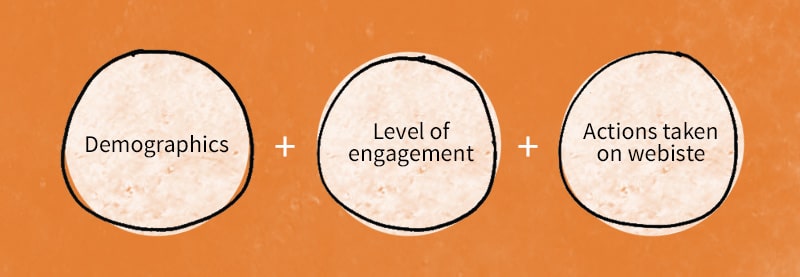
Contact forms have been feeding on information since the dinosaur days of the Internet. Their purpose? To let interested visitors get in touch with you on their own accord. This has long been a starting point for conversation with business prospects in the B2B world. But today, forms can take on a powerful, new role when built around a smart strategy: mining lead intelligence.
This article is about gathering fundamental demographic and behavioral information – not only about your contact page submitters, but also your newsletter subscribers, case study requesters, bid seekers and white paper downloaders. Acquiring this information can help you market yourself and sell to your client base more effectively.
How website lead intelligence is gathered
At Gorilla, we use inbound marketing software for our clients to build profiles of their prospects. When a website visitor takes a form-submitting action like subscribing to a newsletter, downloading a white paper or case study, or requesting a bid, a profile for that person is automatically created in their marketing database.
Simultaneously, our client’s website sends a little piece of data to the visitor’s web browser, telling it to remember that visitor next time he or she returns. Moving forward, any information submitted through another website form is also added to that person’s profile. Useful, but pretty straightforward, right?
Well, here’s where it gets a little bit more interesting.
In addition to information volunteered through form submissions, ongoing data about that visitor’s actions on the website will now be documented within their profile. This information includes:
- What Google keyword search originally brought them to their website
- What specific pages they viewed
- Time spent on those pages
- How much time has passed since their last visit
- How many marketing emails they’ve opened
- Which links they clicked in those emails
Before long, the data paints an insightful picture and shows the sales team the strongest online leads in the system. This intelligence magnifies pain points of visitors, which in turn sets the stage for more customized and compelling sales calls.
A lead intelligence example case
What follows are real screenshots from our own marketing database that showcase intelligence we gathered about a lead captured on our website. For the privacy of this person, we’ve blurred certain data fields.
Demographic information gathered via form submission
The first form-submitting action this visitor took on our website was her download of our marketing manual called “Measuring Online Marketing ROI”. In exchange for the free guide, we asked for the following information, which we then added to her new marketing profile in our database.

Because we specialize in marketing for industrial companies at Gorilla 76, we knew right off the bat this is a potentially good fit for us. She’s a marketing coordinator at a company in the building and construction industry – exactly the type of person we’d love to meet.
How she arrived on our site
Now that she’s entered our system, we can learn that she first discovered us on Facebook , where we promoted our blog post titled “Construction advertising in today’s business environment.”

Determining her level of engagement
At this point we can begin following her engagement on our website. We can see below that on April 17th she looked at a variety of pages on our site, notably our Web Marketing Audit page and our Pricing page. We might also note that these pageviews happened over a lengthy ,14-minute stretch – a good sign of engagement.

What we now know about this lead
Though the above screenshots are only a few of many interactions this person has had with our website and email campaigns, we’ve already answered the following questions – all critical in our sales process:
- Industrial client? Check.
- Potential decision maker? Check.
- Interested in marketing that demonstrates ROI? Check.
- Engaged in our website content? Check.
- Familiar with our pricing? Check.
- Explored our entry level services (Web Marketing Audit)? Check.
For ourselves (and many companies), this sort of information is incredibly valuable as we sort through our leads and determine which are ready to have a conversation about our offering.
When we enter that sales meeting, we also know a bit about the services they might seek and how much education they need on the value of our offering. And that’s probably a lot more than our competitor knows about them.
Let’s talk about a lead intelligence program for you
If you’re interested in having a conversation about a lead intelligence program for your company, sign up for our free marketing assessment. We’d love to talk.
This blog post is one in a series I’m currently writing on inbound marketing and marketing automation. For the others, click here.